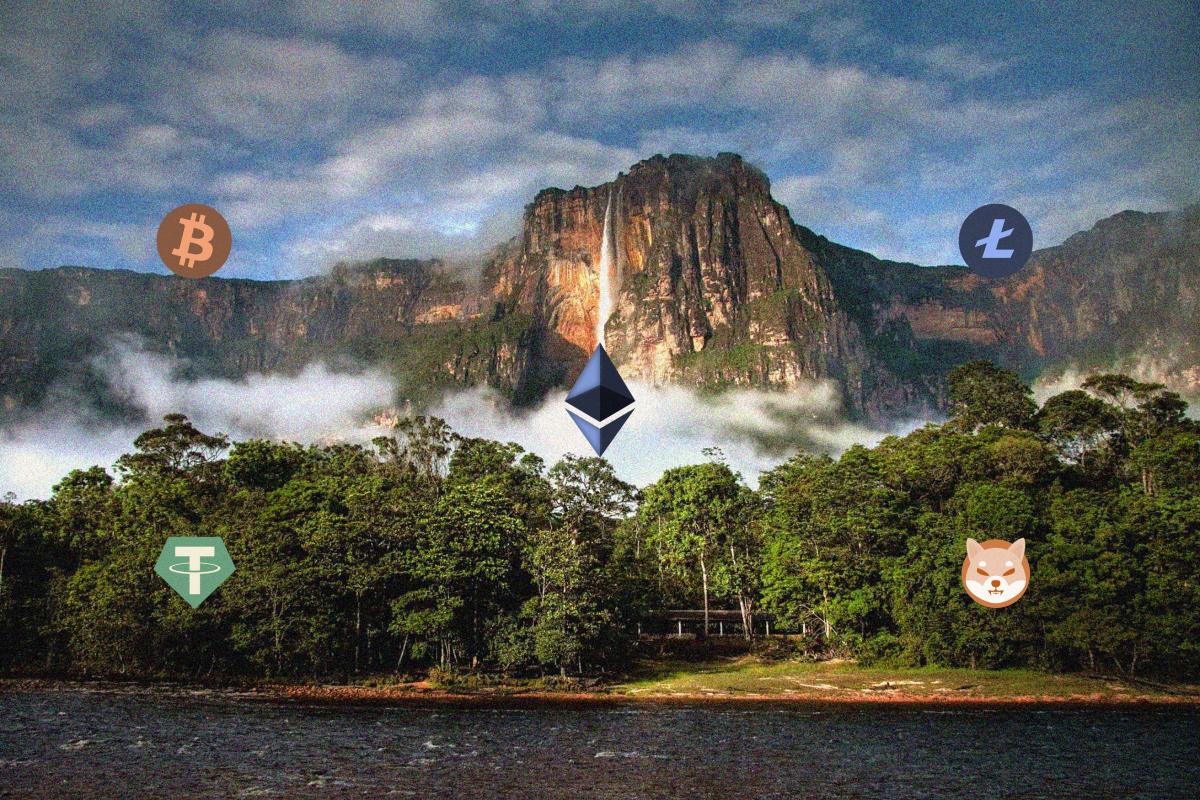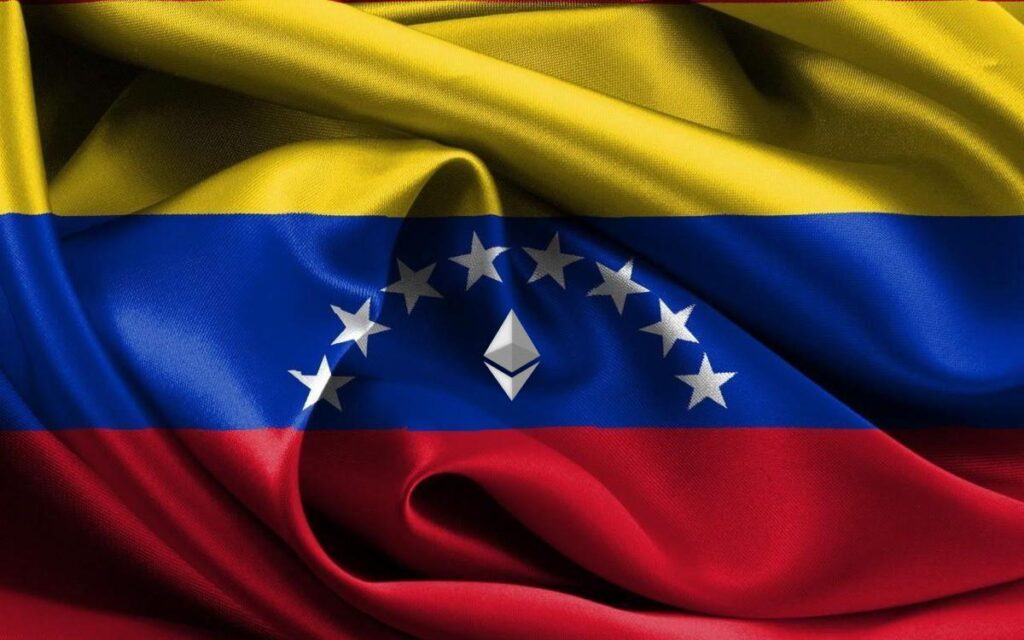
Venezuela has faced political, economic, and social problems for decades, reaching a critical low between 2015 and 2018. By the end of 2018, the Caribbean nation was experiencing hyperinflation at an astonishing 130,060%, and the economy had contracted by nearly 48% since 2013. This crisis shattered public trust in the national currency, leading citizens to seek alternative stores of value.
Many Venezuelans turned to the US dollar, but between 2016 and 2018, cryptocurrencies also began to gain traction. People started hearing about Bitcoin, the “digital currency” that earned the trust of many despite its volatility. Crypto assets found a place in Venezuela, alongside the increasingly dominant US dollar. Since 2020, the US dollar has become even more prevalent; today, nearly all prices in Venezuela are expressed in US dollars.
The issue arises from the high cost of living compared to the modest earnings of most people, a common challenge in a nation with limited foreign investment. Venezuela continues to grapple with significant economic imbalances at both macro and micro levels, leaving its citizens without access to quality public services, among other consequences.
Many Venezuelans prefer to save in US dollars, and major companies such as supermarkets and clothing brands are reluctant to accept cryptocurrencies. However, it’s becoming more common to find small and medium-sized businesses that accept Bitcoin and stablecoins, particularly USDT. Accessing the crypto market, whether to buy cryptocurrencies or find buyers for those you already own, has become increasingly accessible.
According to SimilarWeb, a web traffic analysis platform, Venezuela ranked second in contributing traffic to the Binance P2P website in March of this year, with no fewer than 478,000 visits—accounting for 7.98% of the total traffic. Argentina, another country that has recently grappled with serious inflationary challenges (which, at the time of writing, appear to be easing), led in user contributions with approximately 1,130,000 people—18.98%. Overall, Binance recorded 6 million visits in March, excluding app usage statistics.
Given their profound economic problems, Argentina and Venezuela naturally feature prominently in South American crypto market indicators. In October 2023, Chainalysis published a report on cryptocurrency adoption, noting that while Latin America’s market is smaller than East Asia or Eastern Europe, adoption is strong in the region (at that time, Brazil ranked 9th, Argentina 15th, and Mexico 16th). Chainalysis highlighted Venezuela, where an impressive 92.5% of crypto activity occurs through centralized exchanges.
“My country has suffered a mass exodus due to a severe humanitarian crisis, with approximately 25% of Venezuela’s population leaving in the past decade.
Cryptocurrencies have provided an alternative for democracy activists, NGOs, and all freedom fighters to circumvent censorship.
Venezuela has faced one of the worst hyperinflation rates in history, surpassing one million percent. Cryptocurrencies, especially stablecoins, have played a crucial role in helping many people overcome economic hardships”.
–Leopoldo López, Venezuelan government critic.

The relationship between the Venezuelan government and the crypto industry has evolved through several stages. In 2018, the government targeted citizens involved in mining and conducted raids on facilities nationwide. However, in January 2019, a decree was issued to introduce initial measures for regulating the sector. A year later, an agreement was reached between SUNACRIP—a commission overseeing crypto activities—and Corpoelec, Venezuela’s primary energy company. This agreement aimed to implement policies supporting crypto-mining development.
Despite a relatively calm period for several years, a repressive approach towards miners has recently been revived… Authorities have not yet published an official decree outlining new regulations.
Intriguing facts about cryptocurrency adoption in Venezuela:
- In mid-2022, the United Nations released statistics from 2021 showing that Venezuela had the third-highest rate of crypto adoption in the world. About 10.3% of Venezuelans (1 in 10 people) owned cryptocurrencies. Only Ukraine (12.7%) and Russia (11.9%) had higher rates.
- Even though Binance dominates the Venezuelan market, Orinoco offers an alternative for buying BTC with bolivars. This Web3 platform uses its token, NECTAR, which users purchase and then convert to BTC, USDT, EOS, HIVE, or other tokens supported by the ecosystem. Orinoco also facilitates bank transfers in the U.S. through Zelle.
- In mid-May, during an event in Caracas that gathered key figures from the Latin American crypto sector, the launch of Venezuela’s first physical cryptocurrency publication, BTC Techno Magazine, was announced. Created by Aníbal Garrido and Editza Oliveros, the project features a diverse editorial team from the United States, Venezuela, Argentina, and Mexico. Available in both digital and print formats, the magazine focuses on publishing analyses and interviews.
Follow us on social media for exciting updates from Hamza.biz—the first Web3 Marketplace powered by the Loadpipe protocol. Our platform aims to revolutionize the e-commerce industry by optimizing supply chains, leveraging low gas rates, and providing access to many cryptocurrencies. We’re dedicated to fostering new local and global markets! Click here to explore our roadmap for Hamza.
- binance (14)
- bitcoin (62)
- btc techno magazine (1)
- chainalysis (8)
- Corpoelec (2)
- corruption (3)
- crypto adoption (25)
- crypto market (12)
- crypto mining (7)
- crypto regulation (7)
- cryptocurrencies (80)
- economy (6)
- emigration (1)
- exchanges (9)
- Hamza.biz (65)
- hyperinflation (3)
- leopoldo lópez (1)
- loadpipe (42)
- orinoco (1)
- stablecoins (13)
- SUNACRIP (2)
- un (1)
- Venezuela (7)